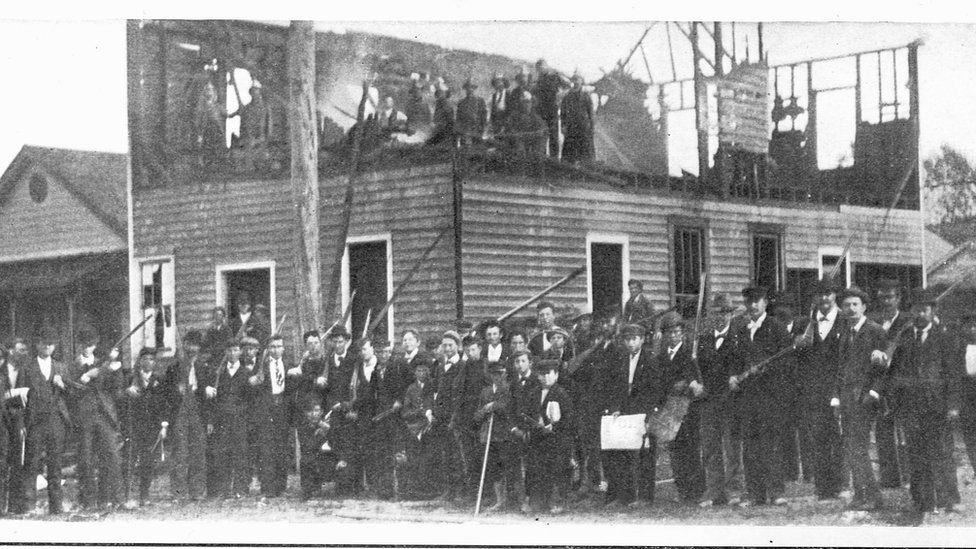The Jim Crow era began with the Plessy v. Ferguson decision in 1896 and lasted for nearly a decade. Unfortunately, this time period was characterized by segregation through laws, disenfranchisement of African Americans, and violence against black citizens.
One of the most infamous incidence of violence took place in 1898 and is considered the only known successful violent coup in American history. The Wilmington Massacre was carried out by white supremacists that loathed the political and financial successes of the African Americans that inhabited local areas. The attacks were exceedingly violent, leading to the deaths of 60-300 African Americans and injuring many more.
Consequently, many Black Americans fled the city in fear of their lives and security, violently shifting the demographics of Wilmington for generations. In retrospect, the massacre reinforced white supremacy and reversed black progress throughout the south by inspiring similar acts of violence against the colored population.
Further stoking the flames of white supremacy was the release of D.W. Griffith's Birth of a Nation on February 8th, 1915. The film was widely controversial for its inaccurate representation of history; it focused on the narrative that black people were savages who preyed on their vulnerable white counterparts and asserted that the Klan was necessary to protect the interests of white folks.
Inspired by the movie, several chapters of the Ku Klux Klan were resurrected, leading to the Second Emergence of the KKK. More violent and widespread than the initial Klan, the Second Klan targeted all minority groups, including the Jewish, Catholic, and other immigrants. One of the more violent methods of the Klan and other supremacist groups was lynching. These were public acts of violence that were used to terrorize and control the African American population. Between 1882 and 1968, over five thousand black people would suffer this awful fate.
Of those that were lynched, Emmet Till's death was as influential as it was tragic. While visiting family in Mississippi, 14-year-old Till allegedly whistled at Roy Bryant's wife in a general store. Roy and his accomplice J.W. Milam would later drag Till from his Uncle's home and maim him. Mami Till's decision to have an open casket funeral and reveal the brutality enkindled outrage across the nation, kicking off the civil rights era.
Fortunately, not all developments of this era were negative. Thurgood Marshal was an pioneering lawyer for the NAACP that helped activists win many influential cases, such as Brown V. the Board of Education. Marshal later went on to become first African American supreme court justice. In the high court, Marshal continued to advocate for the protection of marginalized groups and became a symbol for black excellence.
Additionally, the foundation of the United Negro College Fund by Mary Bethune and Dr. Patterson represented Signiant progress within the black community. With a mission to reduce barriers within education fund advocated for federal education grants and supported many historical black colleges. In all the UNCF reflected broader visions to create equal access to educational opportunities
In closing, the Jim Crow Era was time of heightened racial tension and violence. While certain events directly harmed the black populations. others provided the building blocks for radical change during the Civil Rights Era.








No comments:
Post a Comment